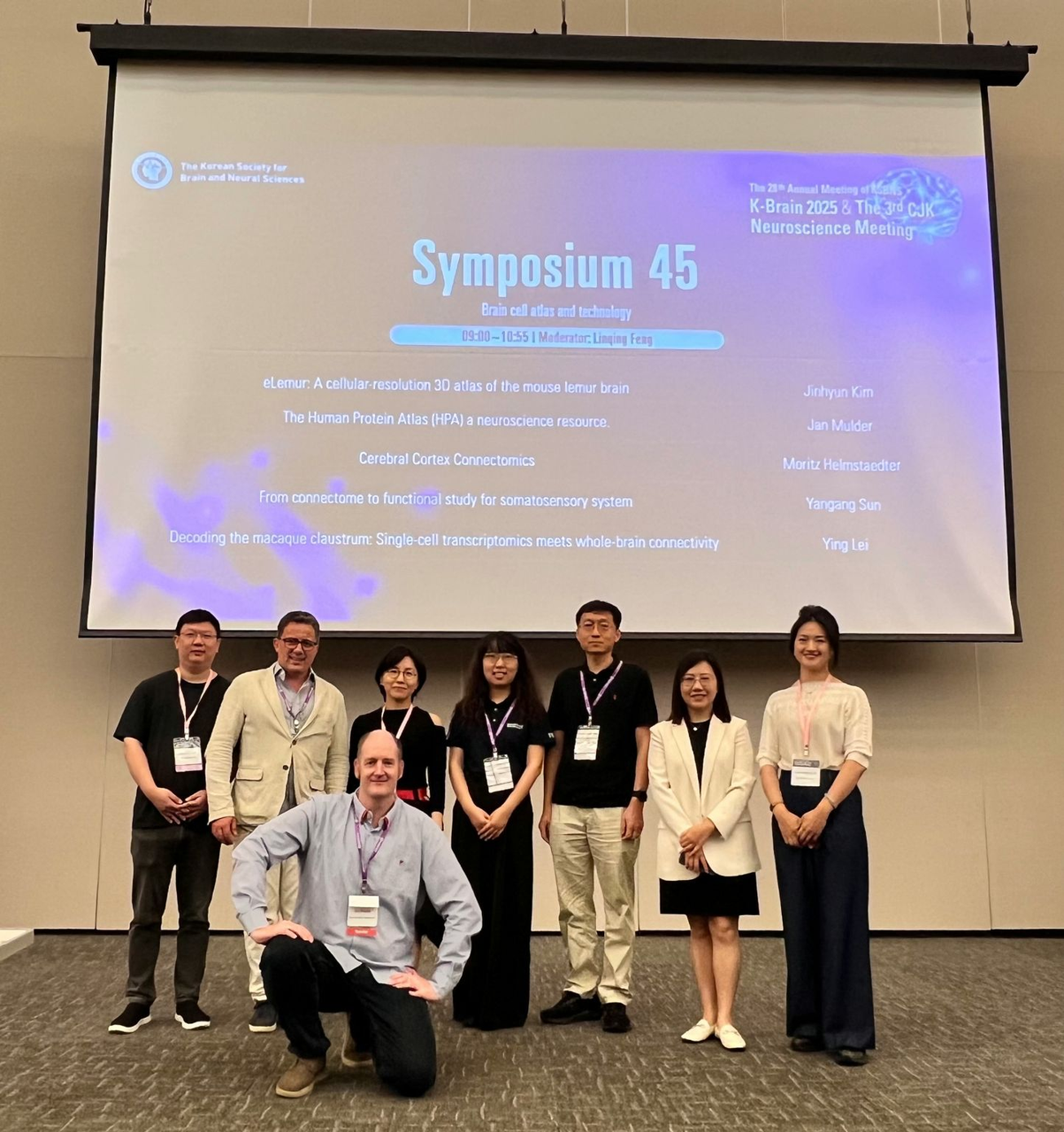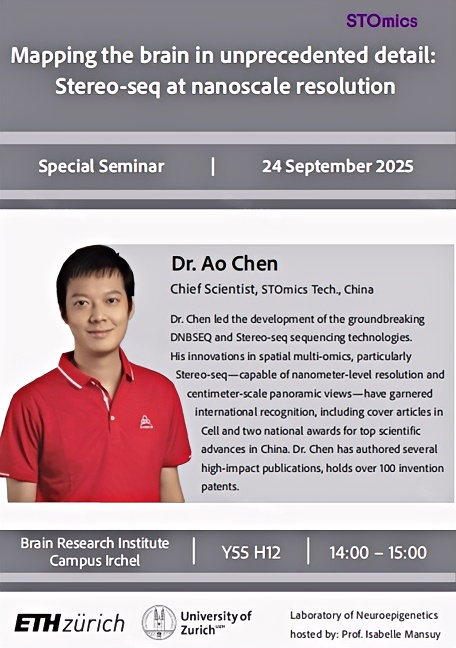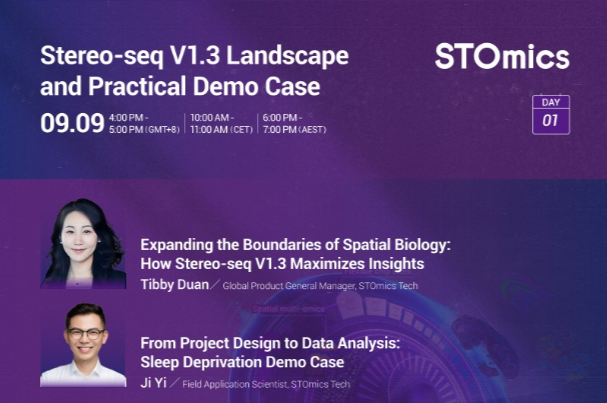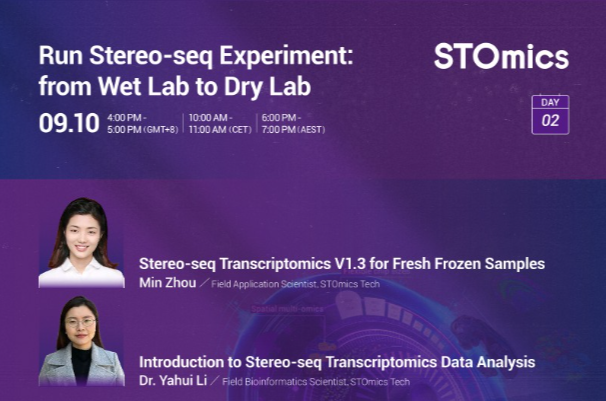All
Products
Resources
News
FAQ
Search
16/10/2025
.jpg)
Stay ahead of the curve with the latest developments, innovations, and resources in spatial biology from STOmics. We're pushing the boundaries of what's possible with Stereo-seq, offering nanoscale resolution across a large field of view. Dive into recent publications and exciting advancements as we continue to empower groundbreaking discoveries in neuroscience, disease research, and beyond.
With over 200 publications showcasing Stereo-seq in diverse fields like developmental biology, neuroscience, and disease research, enabling more researchers to push the boundaries of scientific discovery.

Neuron Study on Alzheimer's Disease: Utilizes Stereo-seq and snRNA-seq to create a detailed hippocampal transcriptomic atlas in both healthy and Alzheimer's patients. (Read more)
Nature Communications on Aging and Alzheimer's: Constructs a high-definition transcriptomic atlas of the prefrontal cortex, revealing new disease insights at the subcellular level. (Read more)
Molecular Cancer on Colorectal Tumors: Presents the first single-cell atlas of colorectal neuroendocrine tumors with liver metastases, highlighting key cellular reprogramming events. (Read more)
Advanced Science on Penile Cancer: Combines snRNA-seq and Stereo-seq to map tumor differentiation and immune microenvironments in penile squamous cell carcinoma. (Read more)
Signal Transduction and Targeted Therapy on Viral Myocarditis: Uses Stereo-seq and snRNA-seq to develop the first spatiotemporal atlas of CVB3-induced fulminant myocarditis in mice. (Read more)
A recent Cell study introduces Stereo-seq V2, the technology enabling simultaneous in situ analysis of host-microorganism molecular interactions within the spatial context of a single tissue sample. Our Stereo-seq OMNI solution, powered by Stereo-seq V2 technology, enables high-resolution, unbiased total RNA mapping directly on FFPE sections. This advance supports spatial multi-omics integration and accelerates scientific research. (Read more)
A Nature Communication study creates a detailed single-cell atlas of the human cerebral cortex, revealing cell types and their precise locations. It uses snRNA-seq for single-cell analysis and Stereo-seq for high-resolution spatial transcriptome mapping to link cellular organization with brain functions. (Read more)
Held August 24-27 at Songdo Convensia, Incheon, Korea, this event gathered top neuroscientists mainly from China, Japan and South Korea to share innovative research and technologies. Together with our collaborators, STOmics co-hostedSymposium #45 on Brain Cell Atlas and Technology, showcasing advances in cellular mapping and connectomics across species. Thank you all for making this event a memorable success.

In September 2025 in Shanghai, this forum showcased cutting-edge research in brain mapping, highlighting the latest advancements in transcriptomic and connectomic technologies. A notable focus was the Cell special collection on mesoscopic brain mapping from the Mesoscopic Brain Mapping Consortium (MBMC), emphasizing studies across rodents to primates, with innovative use of Stereo-seq spatial transcriptomics technology that attracted significant attention.
In September 2025, Dr. Ao Chen, Chief Scientist at STOmics Tech, delivered an insightful talk on Stereo-seq technology at the University of Zurich. The seminar highlighted the groundbreaking spatial multi-omics approach, providing nanometer-scale resolution to map the brain in unprecedented detail. This innovative technology is transforming neuroscience by enabling detailed cellular and molecular mapping across large tissue regions.

Don't worry if you couldn't join our "Stereo-seq V1.3 learning webinar series" webinar live — full recordings are now available to watch on demand.
· Discover how to maximize insights with Stereo-seq V1.3.
· Follow a practical demo from project design to data analysis.

· Explore Stereo-seq V1.3 for fresh frozen samples, including essential preparatory work.
· Get a hands-on introduction to spatial transcriptomics data analysis.

Recent study in Cancer Cell uses spatial transcriptomics to investigate tertiary lymphoid structures (TLS) in hepatocellular carcinoma (HCC). The research reveals TLS development stages and identifies tumor-derived tryptophan metabolism as a key regulator of TLS maturation. By combining spatial transcriptomics with single-cell RNA-seq, ATAC-seq, and in vivo validation, the study uncovers new therapeutic targets to enhance anti-tumor immunity. This work provides a valuable framework for understanding immune regulation within tumor microenvironments across cancers.
Recent study in Molecular Cancer leverages spatial transcriptomics alongside single-cell technology to map tumor microenvironment heterogeneity in colorectal neuroendocrine tumors (CRNETs) and their liver metastases. This comprehensive approach offers new insights into tumor progression and highlights potential targets for improving prognosis and therapies for CRNET-LM.
This video provides a walkthrough of operating the Stereo-seq Large Chip P for spatial transcriptomics experiments. Learn essential procedures, tips, and best practices to ensure accurate and efficient data collection.
This video offers a walkthrough of how to operate the Stereo-seq Large Chip T for spatial transcriptomics. Learn practical steps, tips, and best practices to ensure successful experiment setup and high-quality data collection.